Shoulder pole of street vendors – a charm of Hanoi
According to Vietnam Online, the image of optical burden carried by a small woman is another feature of Hanoi and Vietnam in general. The products sold by this “mobile shop” are much diversified, from street-foods, fruits to souvenirs.
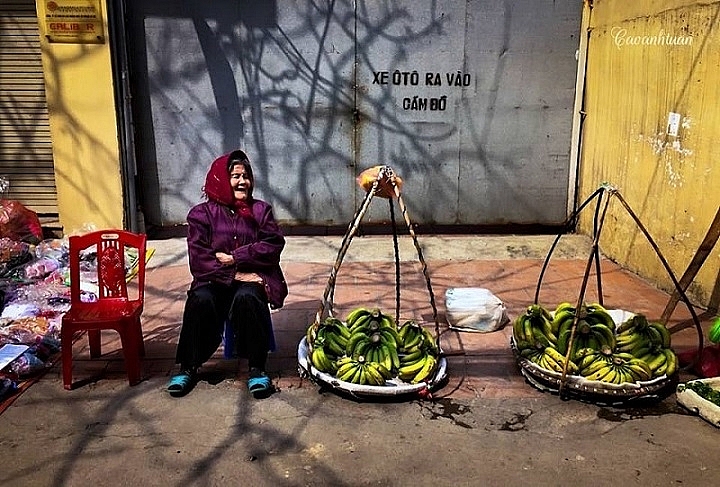 |
| The street vendors’ loud announcements are no longer echoed on small alleys, leaving many city dwellers with nostalgia. Photo: Cao Anh Tuan. |
Visiting Hanoi, tourists not only shoot pictures of famous sites but also woman street vendors. The women carrying twin baskets suspended from shoulder poles have been an icon of Hanoi’s culture and represented the diligence of Vietnamese female, Hanoi Times reported.
On the street, in small alleys, it is easy to catch street vendors walking around with heavy loads. Most of them come from the city’s suburban areas or other provinces, who carry not only goods but also the livelihood of a family on their small shoulders.
No one knows exactly when the first shoulder-pole vendor migrated from the countryside to cities but they have been here and there with the ups and downs of Hanoi for centuries, according to cultural researchers.
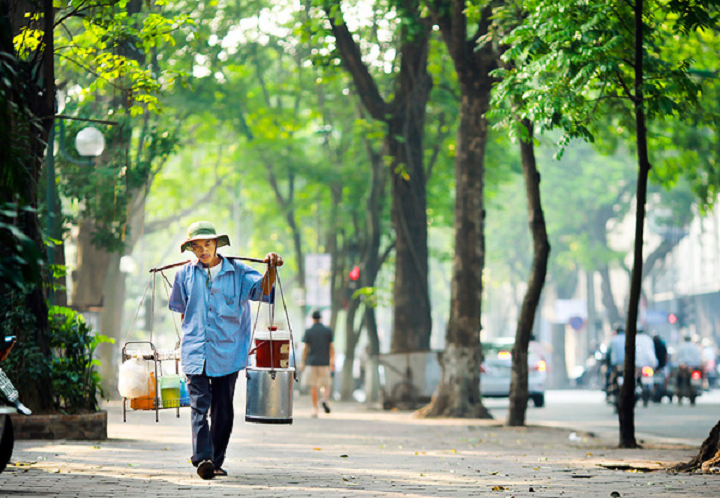 |
| The vendor of tao pho (tofu pudding with ginger syrup). Photo: Yeu Ha Noi |
In the old time, the vendor used a pair of shoulder poles to move easily in small alleys and thereby were called carrying-pole vendors.
Today, many vendors use bicycles instead of shoulder poles. But both means have the same “traditional” name and feature a typical charm of the city. Shoulder poles also show a typical culture of people in the capital city.
For centuries, they have had the habit of buying food from street vendors, especially snack dishes. Just walking out the door or even sitting inside the house, they could still buy just anything for a family meal by waving their hands to a passing-by street vendor.
It is also their own way of enjoying food. There is a variety of food offered in carrying poles such as cakes, sticky rice, different kinds of noodles, sweet desserts, com (green sticky rice), boiled or grilled sweet potato and corn, and so on.
All of them are simple but they are the typical dishes as well as the culinary style of the place. Besides food, other stuffs are also found in their baskets like vegetables and roots, flowers, fruit. All are well arranged in their loads or baskets to be easily carried to many places.
Only about two decades ago, the announcement of these street vendors for the stuffs they sold resounded from the morning to the evening, like a special concert of life such as “Who wants hot and crispy banh mi (Vietnamese bread) or “Who wants tao pho (tofu pudding with ginger syrup)?”
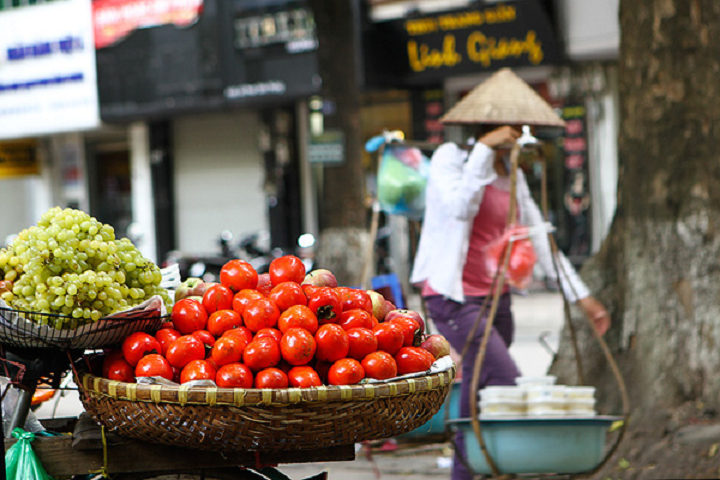 |
| Female vendors carry not only goods but also the livelihood of a family on their small shoulders. Photo: Yeu Ha Noi. |
Today, although street vendors still walking on Hanoi’s streets, some dishes are no longer offered and their loud announcement no longer echoed on small alleys, leaving many city dwellers with nostalgia.
The carrying pole of street vendors has been the inspiration for generations of Hanoi writers, poets and artists, especially when writing about Hanoi. In his book called “Hanoi- thirty- six streets”, writer Thach Lam reserved a voluminous space telling story about street vendors in Hanoi.
Vu Bang, another writer, known for his writings about Hanoi food, also affirmed the value of street vendors to Hanoi’s culture. Today, in the hasty urbanization, there have been more and more buildings and skyscrapers in Hanoi erected, housing fanciful restaurants inside.
The development of technology in the 4.0 era with delivery applications also challenges the work of these street vendors. However, they are still walking day by day, quietly fulfilling their dreams of a life better than the one they left behind in the home village.
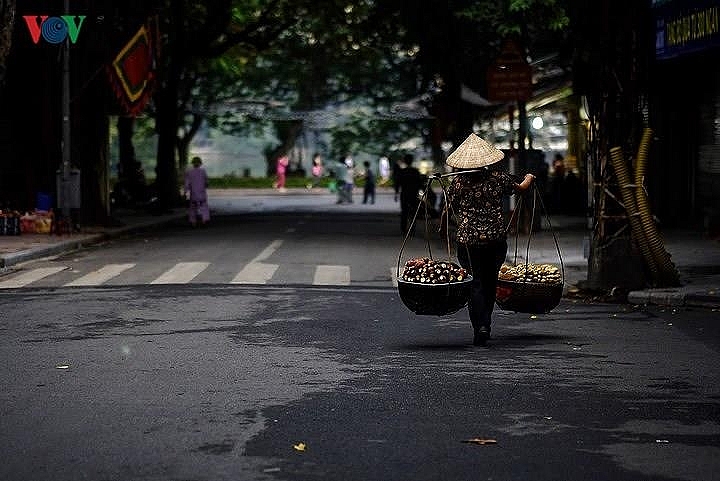 |
| Amidst the hustle and bustle of Hanoi capital, the street vendors are walking day by day, quietly fulfilling their dreams of a better life. Photo: VOV. |
An image etched in the memories of many people and a symbol of cultural identity
Bamboo shoulder poles are a popular agricultural tool used in the daily lives of the Vietnamese people. It is also an image etched in the memories of many people and a symbol of cultural identity which is iconic among foreigners.
In the subconscious mind of the Vietnamese people, the image of the bamboo shoulder pole evokes the daily lives of traditional farmers—their joy and their sorrow—and especially the silent suffering, courage, tolerance and sacrifice of the wives, mothers and grandmothers of successive generations in the nation’s history, Nhandan Online reported.
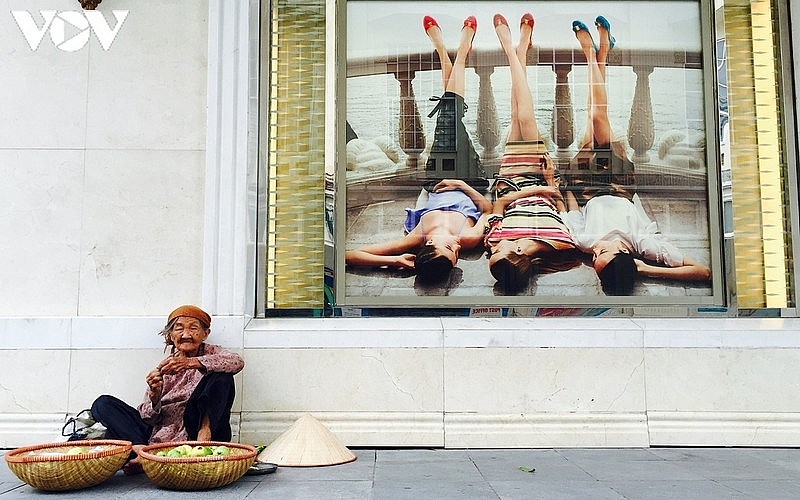 |
| (Photo: VOV) |
The country may be categorised as a wet rice civilisation. Both field bunds and village roads are small, so shoulder poles are often the only appropriate carrying device. They can be made of different materials, but are most commonly made of bamboo, which grows as widely as does the rice.
Despite changes brought on by industrialisation and modernisation, shoulder poles remain the main carriers of 80 percent of the rural population.
The beautiful and intriguing image of shoulder poles has attracted foreigners with inquiring minds. American writer E. Shillue noticed them with great interest immediately upon his arrival: ‘A vendor carries on her shoulder the most romantic thing in the East – a shoulder pole. She gently swings herself out of an alley’ (quoted from Country, published by University of Massachusetts Press in 1997). During the time under French colonialism, many French writers described with affection the scene in which rural women in rows carried vegetables and fruits in shoulder poles along the dikes.
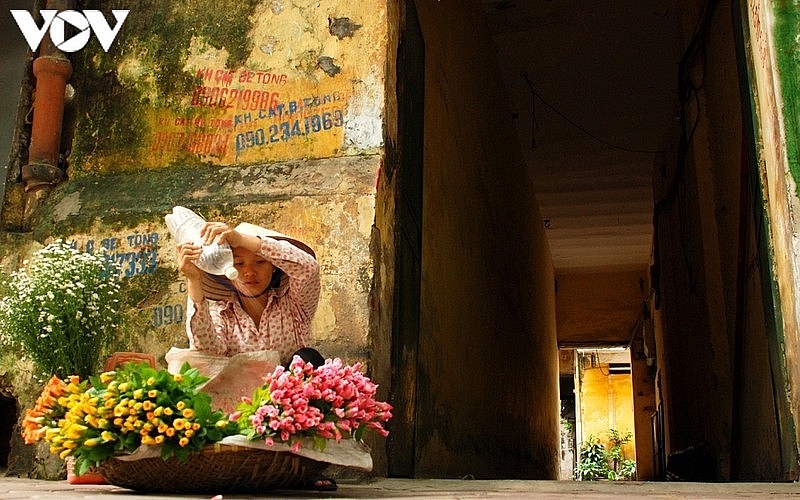 |
| (Photo: VOV) |
It requires effort to produce an appropriate shoulder pole for a given job. According to poet Thanh Hao, who is famous for poems about traditional rural life, an appropriate bamboo tree for making a shoulder pole should not be a big one with short tops that is infested with ants. The stem near the root, with seven or nine even culms, is used for making shoulder poles. It is a taboo to make a shoulder pole with an even number of culms, as it is thought that these shoulder poles are not good for business and do not bring good fortune. It is also said that inappropriate shoulder poles not only cause pain in the shoulder, but also bring bad luck and hardship.
Bamboo shoulder poles are used as a metaphor for burning shoulders in a poem by Nguyen Du (Don ganh tre chin ran hai vai).
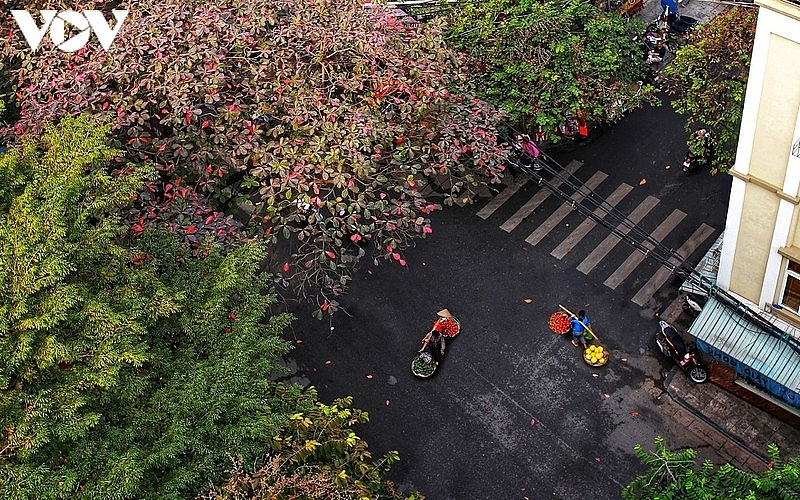 |
| (Photo: VOV) |
City dwellers, who used to carry rice with shoulder poles in support of the national fight against French colonialism or to haul soil in the socialist working campaigns of the 1970s and 1980s, must have little love for the tools. Meanwhile, women have walked dozens of kilometres to market carrying twenty- or thirty-kilogram loads in shoulder poles for generations.
Shoulder poles and ropes for suspending objects symbolise the relationship between husband and wife, which cannot be broken, and the wives who shoulder the responsibility of taking care of their husband’s family.
Shoulder poles are also imprinted on the memories of rural residents as integral to their lives, as they are used when they go to market, when they build homes and when they carry things to festivals, weddings and funerals. They have also contributed to fighting against invaders throughout the nation’s history.
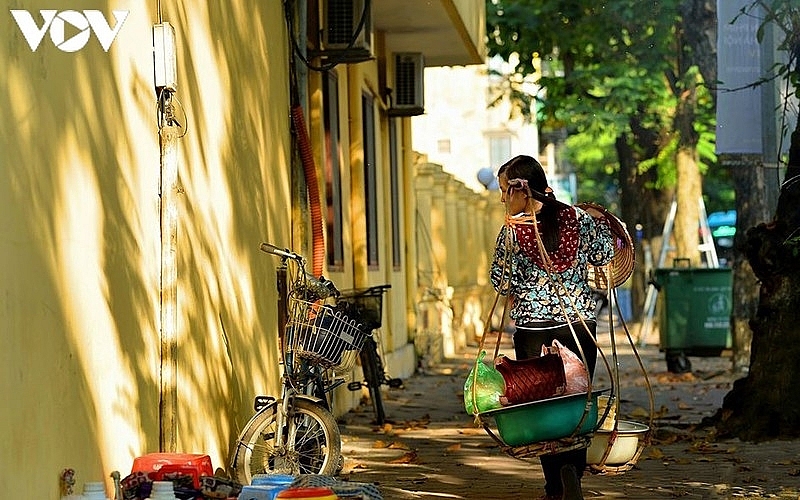 |
| (Photo: VOV) |



